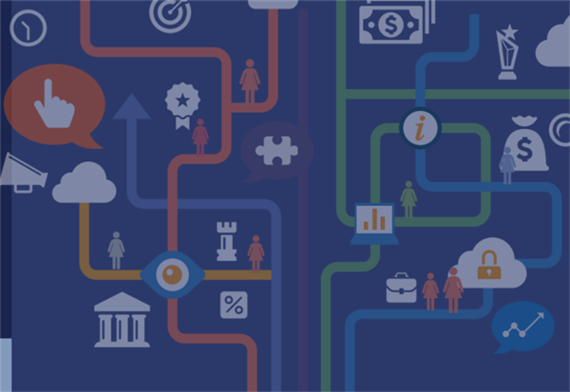By Maria Teresa Villanueva and Caitlyn McCrone

Maria Teresa Villanueva leads the development and implementation of Multilateral Investment Fund projects to help women start and grow their businesses, and provide them access to finance, training, and markets. She holds a Master's degree in development management from American University.
Let's start with a simple puzzle. Using only the information provided below, can you determine whether the final statement is true or false?
Some men are doctors
Some doctors are tall
Hence, some men are tall.
You will not be surprised to note that the conclusion is not 100% certain. Using solely the information above, we can't determine whether some men are tall. Why? Because in this microcosm, we do not know if all the doctors who happen to be tall are women. The example above is called a logical fallacy, an error in reasoning that seems true but is flawed. This example is interesting because it highlights how the lack of breaking down--or disaggregating--data by sex prevents us from seeing the whole picture.
Data collection is essential to deliberate decision making. Governments worldwide have for the last few years begun to take financial inclusion seriously, by developing concrete strategies and targets for women. Some have taken note of the existing gender gaps; however, very few recognize the importance of sex-disaggregated indicators as a tool to help them make policy decisions.
Here's an example of important numbers. Findex reported that in 2011, 39% of people in Latin America and the Caribbean and 51% worldwide had bank accounts. This share of the population increased in Latin America and the Caribbean to 51% in 2014. However, these latest numbers hide a gender gap between men and women of 5%, with women remaining below the regional average and men above (49% of women with bank accounts vs. 54% of men). Perhaps even more economically significant is the persistent gender gap in financial services. Small and medium-sized enterprises owned by women in Latin America and the Caribbean reported that the gap¬ between their demand for credit and the amount of credit they received reached $85.6 billion in 2014--the largest credit gap in any of the world's regions. This means that small women-owned enterprises in that region are unable to get the financing they need to grow.
On the other hand, some recent initiatives--by both the public and the private sectors--to collect data differentiated by sex are helping to ensure that the needs and preferences of 100% of the population are adequately recognized, plotted, and differentiated. They are leveling the playing field for women and men entrepreneurs.
The Global Banking Alliance for Women (GBA), in partnership with the Multilateral Investment Fund of the Inter-American Development Bank Group and Data2X, has released a new report that outlines some recommendations specifically targeted at governments. Among them are two critical actions that governments can take:
Targets get the ball rolling: Set sex-disaggregated targets for financial inclusion strategies. In Rwanda, for example, where financial inclusion has been historically low--only 21% of the population had access to financial services as of 2008--the Bank of Rwanda set a target of 80% financial inclusion by 2017. Disaggregating supply-side data by sex allowed the country's central bank to see that in the previous 5 years, the share of commercial bank loans to women had averaged only around 20%. Empowered by data, the government took two steps: strengthening the reach of savings and credit cooperatives, and modifying rules to allow for more agent banking entities in rural areas, where a majority of women tend to be unbanked. The result was dramatic: the share of commercial bank loans to women doubled to 42% a mere 4 years later.
Make the case for data collection: Sensitize key private- and public-sector actors, including financial institutions, about the importance of collecting sex-disaggregated data.
- Chile. Chile, via its Superintendency of Banks and Financial Institutions (SBIF by its Spanish acronym), has consistently produced sex-disaggregated financial indicators for the past 14 years. It is the only country in Latin America and the Caribbean that has done so, and has achieved this by directly linking the success of this data collection to the performance reviews of the superintendency's staff. The data have revealed some interesting trends: compared with their male counterparts, women registered consistently lower Portfolio-At-Risk (PAR) levels and lower rates of returned checks in all of the years. The data also documented the different trends between women's and men's borrowing and spending habits, and at the same time indicated where gender gaps no longer exist.
In short, collection of sex-disaggregated data gives governments the ability to tailor financial inclusion strategies to address gender gaps, and at the same time, helps financial institutions identify the vast untapped women's market for financial services.
The succinct case for sex-disaggregated data collection can be found here.
Caitlyn McCrone
Caitlyn McCrone works on issues of gender equality and women's economic empowerment for the Multilateral Investment Fund. She has a master's degree in international economics and international relations from Johns Hopkins University's School of Advanced International Studies.
From the Multilateral Investment Fund Trends blog
